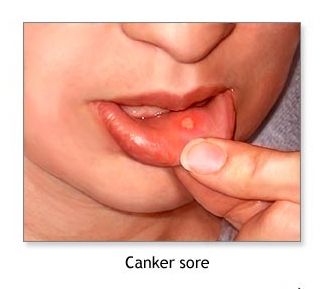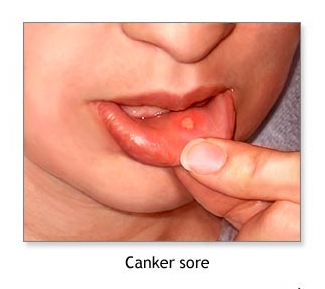
Beating Canker Sores with a Food Elimination Diet & Food Diary
 Recurring oral ulcers inside the mouth, or canker sores, are extremely common, and all of you who have experienced them know how painful and annoying they can be.
Recurring oral ulcers inside the mouth, or canker sores, are extremely common, and all of you who have experienced them know how painful and annoying they can be.
There are numerous factors that can cause oral ulcers and interestingly many studies have found that specific foods can be trigger ulcers in certain individuals.
Food Intake Diary or Elimination Diet?
Often keeping a food intake diary can be helpful in determining possible relationships between foods you have eaten and the onset of ulcers, but if you eat out a lot and aren’t aware of every ingredient in your food it may be hard to track down the problem.
Ideally, a food elimination diet needs to be done under the supervision of your physician to isolate specific dietary causes of ulcers if any exist and avoid possible placebo effects. However, you can perform a smaller scale version of an elimination diet on your own by targeting just the foods that commonly cause oral ulcers, but as always consult your doctor to see if it’s ok first.
To do this, you will essentially be on a gluten free diet for an extended period of time, so if aren’t up for it I would try the food diary approach first and keep track of foods you have eaten 24-36 hours prior to the onset of any ulcers.
Foods Typically Causing Ulcers
I have broken up the typical problem foods into groups. If any of the foods in these groups are not part of your normal diet, do not include them in the test. Also if there is any suspicion of a food allergy consult your physician first.
Group 1: Figs, Pineapple, Citrus Fruits
Group 2: Cheese, and Cow’s Milk
Group 3: Tomatoes, Tomato Sauce
Group 4: Vinegar, Lemon, Mustards
Group 5: Chocolate, Coffee
Group 6: Foods/Gum with Cinnamon or Cinnamon Flavoring, Foods preserved with Benzoic acid (Sodas, etc.)
Group 7: Gluten Containing Foods
How to Perform the Food Elimination Test
- Begin by removing all the foods listed in the above groups from your diet for a full 6 weeks.
- If at the end of 6 weeks you have not seen any improvement in the pattern of ulceration, you should discontinue the diet.
- If improvement or complete remission occurs after 6 weeks, begin adding the food groups back into your diet one by one every 4 days until you return to a normal diet.
- Each time an additional food group is added back into your diet be observant of how it effects your ulcers.
- If no reaction occurs, keep that food in your diet and proceed to the next food group after 4 days.
- If ulcerations do occur in response to the additional food group, immediately withdraw that food group from the diet again. It will be tested again at a later date.
- When a food group produces a positive response, you must allow the ulcers to heal for 6 weeks before trying the next food group on the list.
- Repeat this process until you have made it through all the listed food groups.
- For any group that caused an increase in ulceration, you must now go through that group adding each food into your diet one at a time using the exact same process as before.
Once you are finished hopefully you have a good idea of which foods to avoid. There are still a variety of other foods, food dyes, and food preservatives that can also affect ulcers in rare instances, so the hunt may not be completely over. If ulcers are a persistent problem for you, definitely get in touch with your doctor so that they can take a thorough medical history and rule out other ulcerative disorders and conditions.